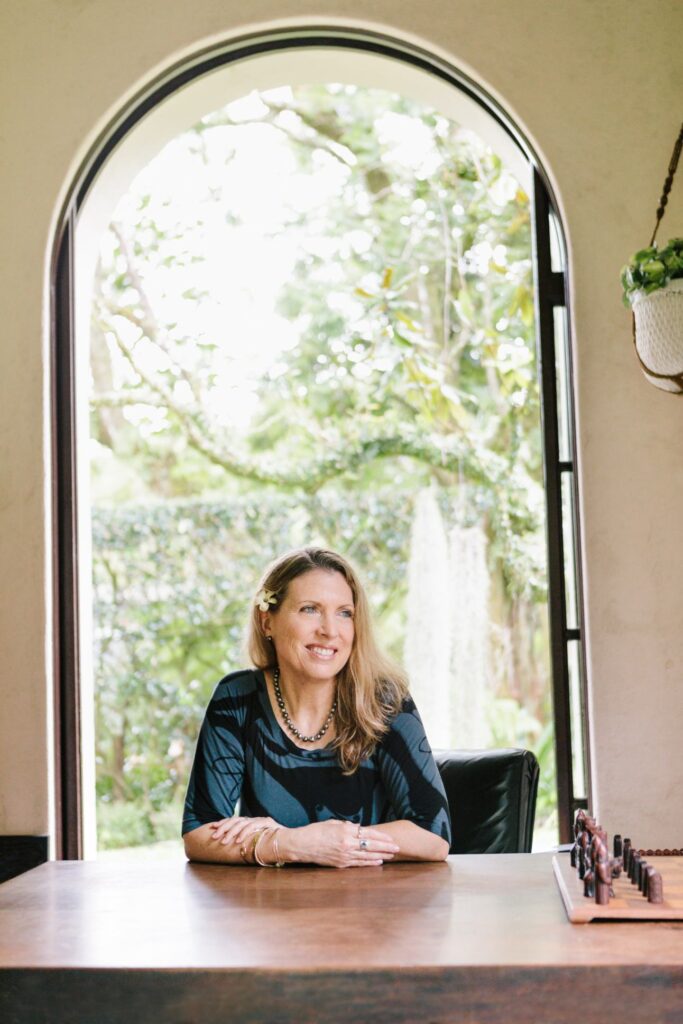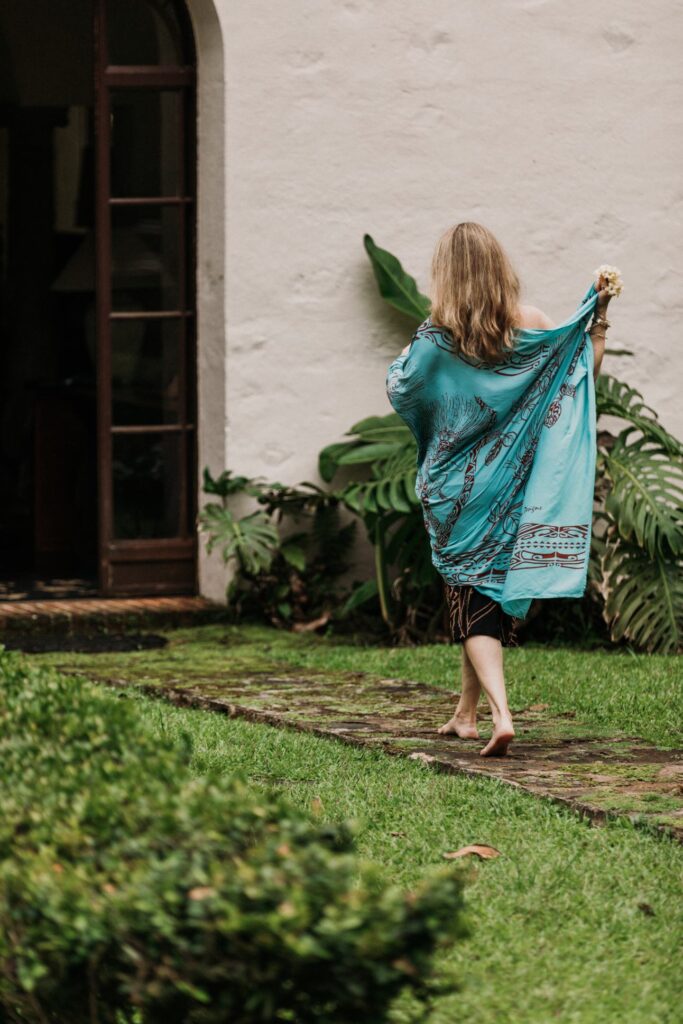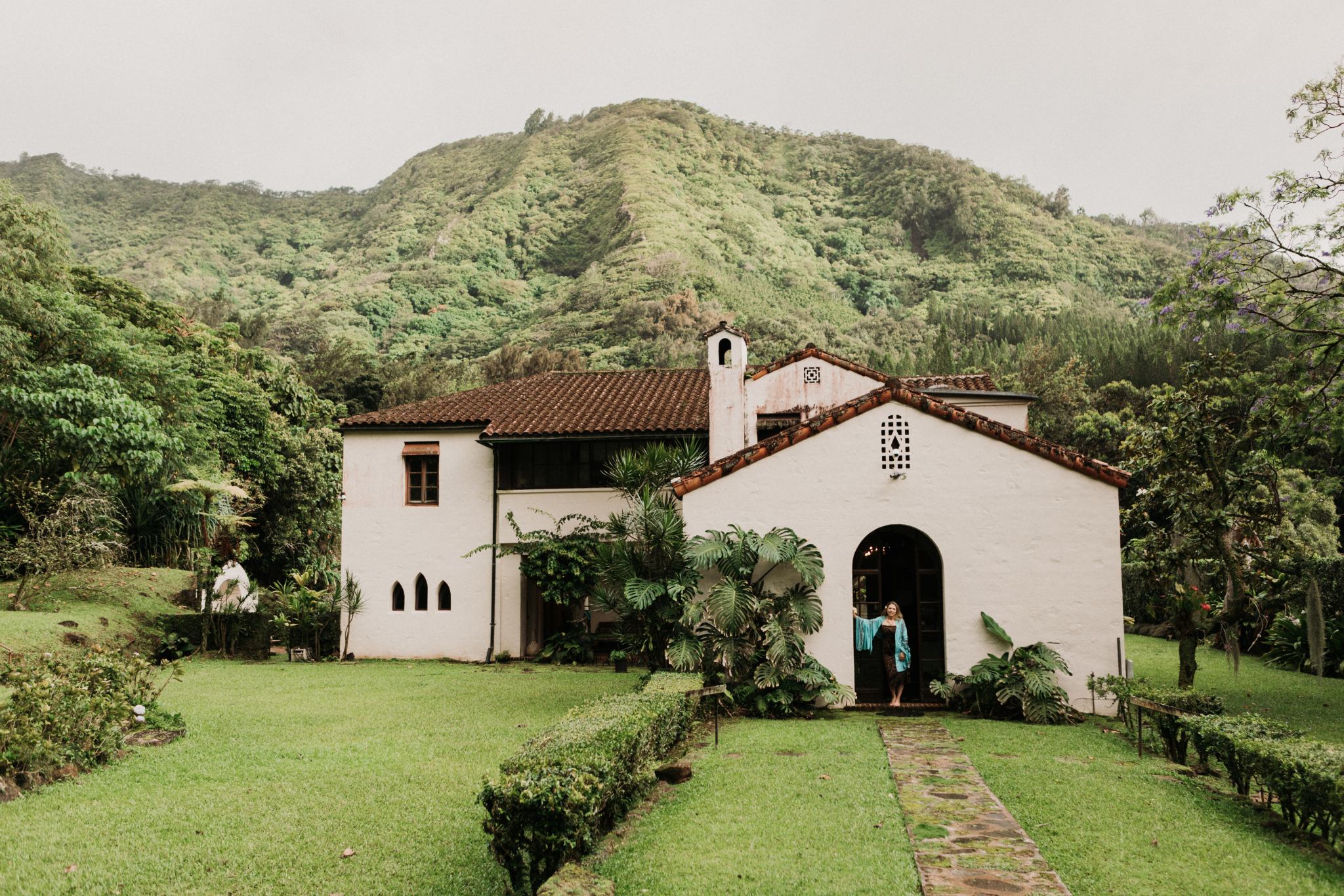Text by Matt Dekneef
Images by Michelle Mishina
Donne Dawson finally has an hour. Somewhere between securing location permits for a Disney film feature and a weekend volunteer trip to Kaho‘olawe, Hawai‘i’s state film commissioner has found a free moment at approximately 3:30 p.m. on a Friday—in other words, the absolute tail end of another hectic week at the Hawai‘i Film Office.
“This is not a normal 9-to-5 job by any means,” Dawson says in her brightly lit office on the fifth floor of the No. 1 Capitol District Building in downtown Honolulu. “Most people don’t understand what a film commissioner does, so just imagine me wearing a firefighter’s helmet all day, every day.” This allusion to Murphy’s Law—that if anything can go wrong, it will—is warranted. With five major film and television productions shooting concurrently across the islands, including a reboot of Magnum, P.I. that is loaded with car and helicopter chases and a hotly anticipated Netflix show starring Ben Affleck and Oscar Isaac, what could possibly go awry? “Let’s just say it’s problem solving, 24/7,” she reiterates.

When the Hawai‘i Film Office was created in 1978, it was set up to centralize and streamline the administration of permits for film production companies. Forty years later, its function has far exceeded its original ambitions. In addition to simplifying the permitting process for state and county jurisdictions, the office also spearheads economic development for Hawai‘i’s film and TV industry, manages the Hawai‘i Film Studio at Diamond Head (a cavernous set where Hawaii Five-0 shoots), markets the islands to production companies, and upholds the state’s reputation as a film-friendly environment. Dawson, who became state film commissioner in 2001, runs the entire show.
She does so with a measurable success record. In 2001, Hawai‘i’s film industry contributed less than $100 million a year to the state economy; today, it brings in an estimated $350 million a year. According to Dawson, there are a few factors to spotlight here: the concentration of diverse geological settings in the island chain, a well-established and relevant workforce, and the passage of a refundable production tax credit program in 2006 that keeps Hawai‘i competitive with top filming destinations around the world. All these work in concert, Dawson says, to “[solidify] Hawai‘i’s global reputation as a mature filming destination in a fiercely competitive film and TV climate.”

In this behind-the-scenes world of moviemaking, Dawson’s role is less referee and more diplomat. Because of this, she is who Hollywood producers call after they fall in love with a particular locale and want access to film there. Negotiations between production companies and government agencies like the Hawai‘i Department of Land and Natural Resources or the Department of Transportation over permission to shoot on Hawai‘i’s public lands do get sticky. These agencies can be protective and territorial, and understandably so, contends Dawson, who acts as a liaison in conversations about permitting.
This was famously the case when J.J. Abrams and Damon Lindelof, the early co-creators of Lost, laid their eyes on Mokulē‘ia Beach. “It was the bright blue ocean next to the white sandy beach next to the green mountains, and it was within one frame where they could get all of that,” explains Dawson of the North Shore visage that the writer-director team considered crucial to the pilot. But the show’s premise that a commercial airliner has crashed on a deserted island required the sands to be strewn with aircraft wreckage, a cause of reservation for DLNR. The department didn’t want to be bombarded with complaints about the beach’s accessibility to the public, one of the core right-of-ways that makes Hawai‘i so special to its citizens and visitors.
“It’s all about providing comfort to these agencies that are nervous to let people shoot there,” Dawson says. “When I advocate for a certain production, I’m vouching for it. I explained the fact that these guys [with Lost and ABC] are seasoned veterans, and they’re going to do this the right the way, in a way that’s pono to the land, ocean, and the community around it.”
Ultimately, Dawson was able to convince the regulating departments to grant permission at the final hour. Had she not been successful, Lost may have moved its series to Australia. “Pulling that off was really monumental,” Dawson says. “I’m very proud of the fact that we made that happen.” Lost proved to be a global Emmy-winning success that garnered acclaim among audiences and television critics and bolstered Hawai‘i’s repute with Hollywood creatives. Throughout the series’ six seasons, which were shot at locations around O‘ahu, the island convincingly stood in for assorted locales including Japan, Iraq, Australia, France, and the U.S. Midwest. “Lost became our new calling card,” Dawson says. “[That series] proved that with creativity we could film about anything here.”


Dawson’s facilities, however, aren’t to be confused with blind appeasement. She shut down a Chris Brown music video when its producer attempted to set up a full-blown dance stage on Ahu o Laka, the Kāne‘ohe sandbar that’s considered a fragile cultural and ecological site. When the title of writer-director Cameron Crowe’s film Aloha was criticized as an eye-rolling display of cultural appropriation by local audiences, she told the Hollywood Reporter that had she known the name, she would have advised against it. (The film was still called “The untitled Cameron Crowe project” during shooting.) After a producer approached her with a cringe-worthy pitch for a Dancing with the Stars-style reality TV competition that traded ballroom dancing for hula, she talked him down from trying to get it made. “If I know a production is walking right into a landmine, whether it’s putting themselves at risk of being shut down, of being picketed by the public, of receiving terrible press, it’s my job to try and mitigate that,” Dawson says. “We’re living in a time where audiences are more demanding and savvy. They want authenticity, not the stereotypical view of Hawai‘i.”
Episodes like these reveal a need for more education about Hawai‘i’s unique culture, believes Dawson, who is of Native Hawaiian descent. Her own cultural knowledge and personal relationships with Hawaiian practitioners and experts have made her something of a kia‘i (guardian) of cinema. Since late 2017, Dawson has been earnestly working on a digital manual called The Hawaiian Handbook with the University of Hawai‘i at West O‘ahu, modeling the document after The Brown Book: Māori in Screen Production, a similar cultural call to arms tailored to New Zealand’s film industry. She imagines it as a “user-friendly navigation tool to successful mediamaking in Hawai‘i” that covers everything from sacred and archeological sites to value systems like mālama ‘āina (to care for the land). Dawson intends for it to help visiting production teams better understand the nuances of shooting in Hawai‘i and the dos-and-don’ts of conducting business here.

“Producers just don’t know what they don’t know,” Dawson says. But when Hollywood flies in swarms of crew members throughout the year for designated amounts of time, she insists there is a need for them to have a baseline awareness of Hawai‘i’s history, peoples, and sensitivities about the environment. “We’re not the censor police,” she says. “What we’re doing is educating them about our native culture and ensuring that whatever creative project they want to bring to fruition has a chance of surviving.”
The following afternoon I get a sense of Dawson’s openness when a photographer and I arrive at Polihiwahiwa, her historic Mediterranean-style two-story family home in Nu‘uanu, to take portaits of her. The house is surrounded by manicured hāpu‘u ferns and has a Hawaiian flag waving majestically over the carport. As I take in its stone walls, high ceilings, and Hart Wood architecture, I can’t help but imagine it as a film set art-directed to reveal some of Dawson’s character. Binders fanned out on an ottoman are labeled “Genealogy.” Shelved in a nearby bookcase are tomes dedicated to legislative law through the decades next to well-worn hardcovers from preeminent Hawaiian scholars; here, State of Hawai‘i documents are at home next to works by Hawaiian historian Samuel Kamakau. Upon sighting a banana grove beside the brick-lined swimming pool, the photographer suggests we set up there, but first Dawson fetches a machete so we can hack off a bundle of browning leaves. The home has portals and archways that allow for gorgeous natural light that clearly inspires the photographer. What is supposed to be an hour of Dawson’s time somehow transforms into three, but she doesn’t seem to mind. She just wants to help us get the shot.





